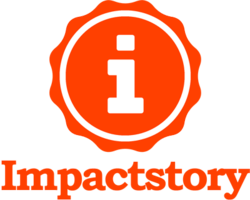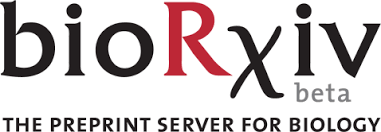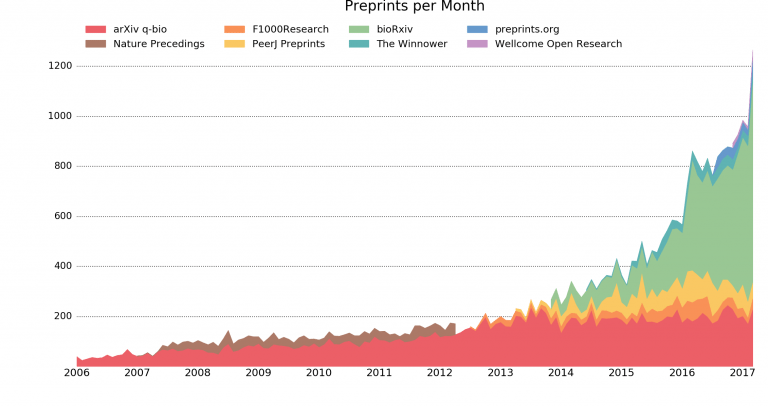In today’s digital and open access environments people are talking about the shift of academic maxims from “publish or perish” to “get visible or vanish” .
Services
UNIL is an ORCID member and has purchased a premium subscription to make sure that all academics and researchers working at UNIL & CHUV receive maximum benefits from ORCID services.
For example, Funding organizations like the FNS requests ORCID identifiers during grant submission and plan to use it to reduce the burden of a grant submission. Publishers are collecting ORCID iDs during manuscript submission making your work attributable to you and only you.
Over time, this collaborative effort will reduce redundant entries of bibliographical data into multiple systems. Your ORCID iD will belong to you throughout your scholarly career as a persistent identifier to distinguish you from other researchers and ensure consistent, reliable attribution of your work.
FBM strongly encourages ORCID adoption and our unit is actively helping FBM UNIL/CHUV researchers in creating their ORCID iDs.
ORCID workshop for researchers – researcher profile useful for promoting your research and obtaining SNSF funding
ORCID workshops are provided on a regular basis by our service ORCID.
During this workshop, researchers from the CHUV and the FBM will learn how to use and exploit the many possibilities offered by ORCID. They will learn in practice how to import their research results (funds, publications, citations, data sets, etc.) and their activities in learned societies/networks or review their ORCID iD profile. They will learn how to use their ORCIDiD as a tool to enhance the value of their research when applying for grants such as from the SNSF and when applying for promotion. They will also learn how best to interconnect all this information.
The courses are free for members of the CHUV and the FBM.
Duration 1h30
Location Training room – Entresol 1 of the Bibliothèque Universitaire de Médecine, Chemin des Falaises 2, 1005 Lausanne or researcher’s office
Registration on request – contact Cecile.lebrand@chuv.ch
How do you get your institutional ORCID?
- You already have an ORCID iD: in this case, do not subscribe a new ORCID iD. You simply have to link your existing ORCID iD to the UNIL institutional ORCID. The procedure, is very simple and is described here.
- You do not yet have an ORCID iD: First create an ORCID iD ID and then link it to the UNIL institutional ORCID, please follow the steps described here.

Tools
Ask us about ORCID and the way to interconnect it to your ResearcherID and Google Scholar profile.
ORCID iDs ensure you get credit for ALL of your work

Video presenting What is ORCID?
- Do you worry about getting credit for your research because your name is common or you have publications under multiple aliases?
- Do you struggle to keep track of all of your research outputs?
- Are you annoyed by having to enter the same information over and over in manuscript and grant submission systems?
To solve these problems, there’s now ORCID, the Open Researcher and Contributor ID. ORCID is registry of unique identifiers for researchers and scholars that is open, non-proprietary, transparent, mobile, and community-based. ORCID provides a persistent digital identifier to DISTINGUISH YOU from all other researchers, AUTOMATICALLY LINKING your professional activities.
Eight reasons you should get—and use—an ORCID iD (post from Alice Meadows, Director for Community Engagement and Support at ORCID on the blog Genes to Genomes).
Distinguish yourself. If you share your name with other researchers—in your own or another field—an ORCID iD will help distinguish you from them.
- Your lifelong digital name. Even if you have an unusual name, it can still be difficult to correctly identify and connect you with all your activities and affiliations. Throughout the course of your career, you may change your name, publish under different versions of it, or have it transliterated into other alphabets. You may also change organizations or countries, fields, or even disciplines. But you still want to be uniquely identifiable and to stay connected with your body of work. Your ORCID iD stays with you throughout your professional life, ensuring that you and your research contributions stay connected.
- You’re in control. ORCID is researcher-centric, built on principles of researcher control and privacy. You register for an iD yourself and decide which information to connect to it, including what to make public, what to share with trusted parties, and what to keep private. You choose how often—if at all—you get notifications. And you can change your permissions, settings, or delete items at any time.
- “Enter once, re-use often.” Our goal is to minimize—and ultimately eliminate—rekeying of data in multiple systems, saving you time and reducing the risk of errors. We do this by developing open tools and services that allow you to connect your ORCID record with other systems you use (grant application, manuscript submission, and research information management systems, for example). Once connected, you can grant permission to those systems to update your ORCID record.
- Automatic updates. Even better, in some cases you can opt for these updates to happen automatically AND your trusted organizations can opt to be notified when new items are added to your record, saving you reporting time. One great example is Crossref’s new auto-update functionality. Crossref creates DOIs for publications and, as long as you use your ORCID iD during manuscript submission and your publisher passes it along in the metadata, Crossref can now automatically update your ORCID record when your paper is published. You simply have to grant permission once, and they will enable updates for any publication and any publisher. Look out for an email from update@notify.orcid.org.
- More than just publications. As well as easily connecting your publications to your ORCID record, you can also connect peer review activities, datasets, grants, and more. Life scientists are especially keen to connect datasets and peer review to their ORCID record, which is good news, since both are easy to do. DataCite’s Search & Link wizard already allows you to connect your existing dataset DOIs to your record, and they are launching auto-update functionality similar to Crossref. And last October, we launched new functionality to enable acknowledgement of peer review activities, which has been launched by several publishers and is in the works at some funding organizations.
- Quick, easy, and free. Registering for an ORCID iD couldn’t be easier—all we require is one version of your name, a valid email address, and a password. We encourage you to include all versions of your name (any character set), your affiliation(s) and research contributions. You can find out more about what to do once you’ve got an ORCID iD—and why—here.
- Open, community-led. ORCID is non-proprietary, which means you can use it in many of the systems you already use, including grant applications systems, manuscript submission systems at over 2500 journals, and your local university or research institute research profile system. You can also easily connect your information held in author profile systems such as ResearcherID to your ORCID record.
To get started:
- Claim your free ORCID iD at http://orcid.org/register
- Import your research outputs and add biographical information using ORCID automated import wizards
- Link your existing ORCID iD to the UNIL institutional ORCID. The procedure, is very simple and is described here.
- Use your ORCID when you apply for grants, submit publications, or share your CV.
Workshops:
ORCID workshops are provided on a regular basis by our service (check the CHUV calendar).We will provide you with guidance on how to import your research outputs and biographical records to your ORCID profile and how to interconnect all information. We will help you with a better understanding and use of ORCID.
More visible using user Google Scholar Profile

Google Scholar is a bibliographical tool for scholarly publications. Therefore, creating a Google Scholar profile could help enhancing your visibility. After setting up your profile, any searches with your name in Google Scholar will show your profile on top of the results list. Your profile shows your list of publications in Google Scholar with classical metrics. For the calculation of your citation impacts, Google Scholar considers citations not only from scientific journals but also citations from the grey literature including books, all types of magazines, thesis, reports …
- Go to Google and create an account if don’t have one yet.
- Go to Google Scholar, log in and click “My Citations”.
- Follow the instructions to create your profile and remove publications that are not yours.
You can search for new articles and citations (of your work and/or others)
You can get an overview of researchers working at UNIL/CHUV with a Google Scholar profile
To know more about Google Scholar Citations and Metrics calculation
More visible using ResearcherID Profile

ResearcherID is the user profile tool from Thomson Reuters. Researcher ID offers a public profile of your article citation counts and author indicators. You can regularly update your list of publications indexed by WoS or manually add your papers in your ResearcherID profile. It helps you manage your author indicators and can easily be connected to your ORCID id.
- Connect to Web of Science
- Go to “My Tools”, sign in and complete your profile.
- Go to Web of Science, log in and click “My Citations”.
- Add your publications from Web of Science.
Or
You can get an overview of researchers with a ResearcherID profile and check for author indicators.
To know more about InCites_MetricsGuideBook_web
More visible using Impactstory profile

Impactstory is an open-source, free web-based tool that helps scientists explore and share the diverse impacts of all their research products. By helping scientists tell data-driven stories about their altmetric impacts, they are building a new scholarly reward system.
Impactstory is committed to:
- open source
- free and open data, to the extent permitted by data providers
- radical transparency and open communication
Impactstory helps you discovering almetric indicators for your publications and can easily be connected to your ORCID iD.
bioRxiv (pronounced “bio-archive”) is a free online archive and distribution service for unpublished preprints in the life sciences. It is operated by Cold Spring Harbor Laboratory, a not-for-profit research and educational institution. By posting preprints on bioRxiv, authors are able to make their findings immediately available to the scientific community and receive feedback on draft manuscripts before they are submitted to journals.
Articles are not peer-reviewed, edited, or typeset before being posted online. However, all articles undergo a basic screening process for offensive and/or non-scientific content and for material that might pose a health or biosecurity risk and are checked for plagiarism. No endorsement of an article’s methods, assumptions, conclusions, or scientific quality by Cold Spring Harbor Laboratory is implied by its appearance in bioRxiv. An article may be posted prior to, or concurrently with, submission to a journal but should not be posted if it has already been published.
Authors may submit a revised version of an article to bioRxiv at any time (prior to article acceptance for publication). Once posted on bioRxiv, articles are citable and therefore cannot be removed.
Publication
Once an article is published in a journal, bioRxiv will automatically update the preprint with a link to the published version.
Terms of distribution
Authors retain copyright and choose from several distribution/reuse options under which to make the article available (CC-BY, CC-BY-NC, CC-BY-ND, CC-BY-NC-ND, or no reuse). By posting on bioRxiv, authors explicitly consent to text mining of their work (e.g., by search engines or researchers).
bioRxiv reserves the right to identify and remove any articles that contain plagiarized material or describe experimental work that is not performed in accordance with the relevant ethical standards for research using animals or human subjects.
Updated: 20.10.2023






